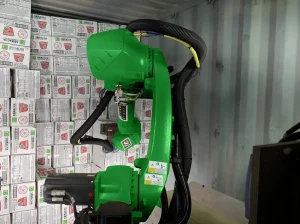Exploring the Advancements in Image Generation AI A Look at Flux Tools

In today’s fast-evolving world of technology, Image Generation AI is taking enormous strides. Recently, Black Forest Labs has introduced groundbreaking updates through their Flux tools, setting a new benchmark in the field. Through these innovations, manipulating both real and AI-generated images has become more accessible and precise.
Understanding Flux Tools
Flux Tools from Black Forest Labs are a suite of models that elevate the capabilities of text-to-image creations. These tools, namely Flux One Fill, Flux One Depth, Flux One Canny, and Flux One Redux, add layers of control and adaptability to their existing models, thereby broadening the potential for image alterations.
Flux One Fill: Revolutionizing Inpainting and Outpainting
Flux One Fill stands out with its ability to edit and extend images effectively. By using a text prompt and binary mask, users can creatively alter any part of an image, including real photographs. This feature competes strongly with other top models in its category, showing significant promise in creating realistic edits.
In practice, Flux One Fill can transform an image’s components with precision. For instance, in a sample, the AI accurately replaced a coat with a denim jacket, maintaining the image’s original style and lighting. Such precision showcases the model’s ability to keep stylistic consistency, which is crucial in high-quality image editing.
Flux One Canny: Enhancing Image Structure
Flux One Canny leverages edge detection to guide image modification. It is crafted to work alongside the Depth models, enhancing the precision of alterations by mapping the edges of objects within an image.
In a demonstration, the tool converted an owl into different artistic variations while keeping its original pose. This feature reflects the function’s capacity to maintain important structural details, crucial for reliable image editing enhancements.
Flux One Redux: Ensuring Consistent Variations
Flux One Redux is perhaps the most intriguing, focusing on variations and consistency in image generation. By allowing slight modifications while keeping key details intact, it facilitates diverse yet consistent outputs.
In practical terms, Redux can generate variations of a single image with slight differences. As seen in examples with food items and animals, the tool preserves salient features, providing stability and consistency across multiple images.
Application and Accessibility Through Partners
Black Forest Labs has made these models accessible via their API, including Pro and Open Access Dev variants, on platforms like Fall AI and Together AI. This broad availability ensures that numerous users, from hobbyists to professionals, can leverage these tools effectively.
This approach has also led to more options for open-source communities, which often foster innovation and competition. By providing inference code and weights, Black Forest Labs encourages further advancements in AI art generation, broadening the scope and affordability of these technologies.
Comparing with Existing Technologies
Overall, the performance of Flux models is compared favorably against major players like Mid-Journey and Stable Diffusion. Results from benchmarks suggest that Flux tools often offer superior or comparable results, especially in terms of inpainting and structural precision.
In trials, Flux One Fill displayed impressive proficiency in manipulating and imitating image elements, often surpassing competitors like Idiogram. Such advancements highlight Flux Tools as a serious contender in AI-driven image editing.
Real-World Applications and Experimentation
Several demonstrations have illustrated the practical capabilities of Flux Tools. From adjusting human features in photographs to altering scenic backgrounds, the tools allow for seamless integration of creative ideas into effective visual content.
For instance, users tested alterations on their photographs, altering backgrounds or adding elements like headphones. These experiments reflect the suite’s user-friendliness and its potential for both casual use and professional application.
Challenges and Future Prospects
Despite their capabilities, certain limitations in character consistency in Redux models have been noted. Users have sometimes encountered challenges in achieving exact likenesses.
Nevertheless, the development direction remains promising. Continuous improvements and feedback are likely to refine these models further, enhancing their effectiveness for more complex and detailed tasks.
In summary, Flux Tools by Black Forest Labs represents a significant leap forward in image generation AI. With their varied functions and impressive capabilities, these tools have opened new pathways for creativity and innovation in digital imagery.







